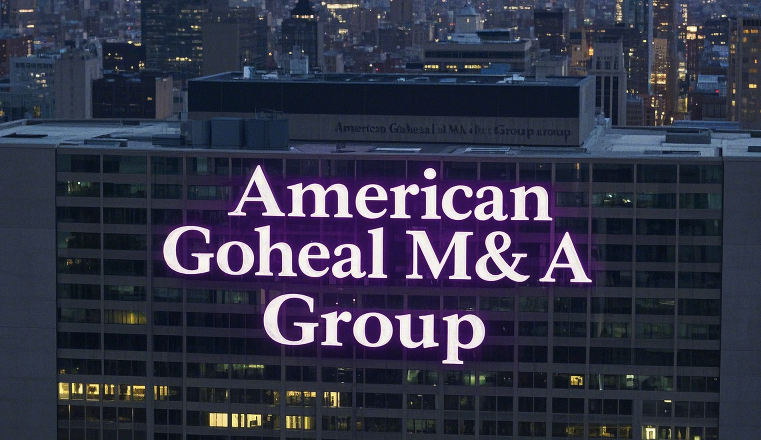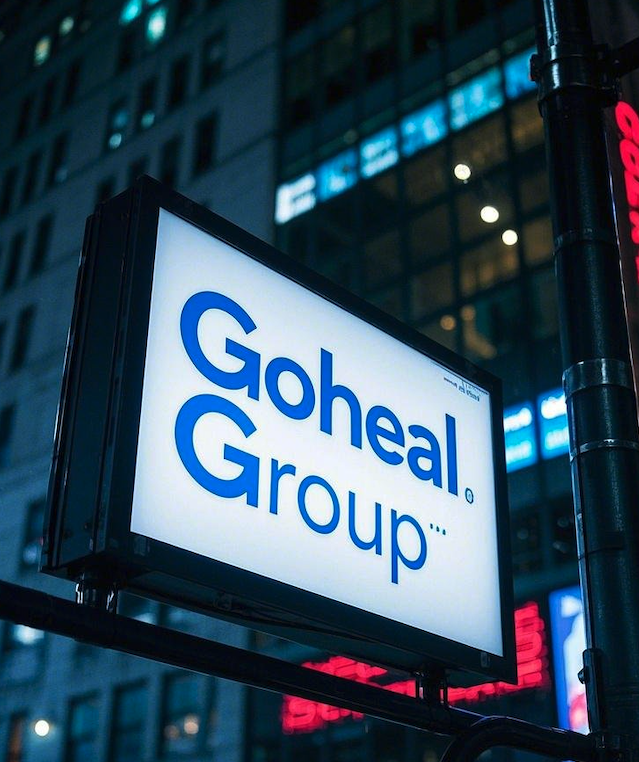"If one is upright, he will act without being told; if one is not upright, he will not obey even if he is told." When this ancient saying is moved into the capital market, it has an extra layer of irony. As managers of public funds, listed companies should "correct themselves to correct others"; however, in reality, the magical drama of "small shareholders who cannot be helped by major shareholders are bitten back" is frequently staged. Especially from 2024 to 2025, when capital operations are frequent and market fluctuations are drastic, are major shareholders "transfusing blood to save lives" for enterprises, or "sucking blood for themselves" through shell companies? This war of power and interest distribution over "who feeds whom" has gradually torn off the gentle coat of market operation and also attracted the sword of supervision to the throat.

American Goheal M&A Group
In Goheal's view, many mergers and acquisitions and restructuring are "industry synergy" on the surface, but in fact they are "interest transfer" or even "shareholder hollowing out". Capital operation should not only be a number game and agreement stitching, but also a deep physical examination of corporate governance and market trust.
A recent data shows that more than 40% of the mergers and acquisitions in the A-share market in 2024 involved "related blood transfusions" from controlling shareholders, and about half of them ended up with "failed mergers and acquisitions" or "significant goodwill impairment". For a time, "major shareholder replenishment" became a hot topic in the capital market. For example, the controlling shareholder of a well-known real estate company, in the context of continuous losses in its main business, not only injected its high-quality assets at a "high premium" into the listed platform, but also extracted huge consideration returns in the name of "performance betting", which eventually led to the break of the capital chain of the listed company and the halving of its market value.
But is this really "major shareholders saving the company"? Many industry insiders pointed out that this is more like a capital game of "retreat to advance": using capital injection to cover up capital withdrawal, and using superficial blood transfusions to cover up actual blood sucking. And Goheal also emphasized in its latest M&A case study in 2025 that once major shareholders abuse the right to operate capital, the company itself will become a "benefit container" rather than a "value creator".
Of course, not all major shareholders are sucking blood, and some are indeed "taking the thunder and charging". In times of crisis, controlling shareholders alleviate liquidity crises for enterprises through debt-for-equity swaps and personal guarantees, which undeniably plays a key role in stabilizing stock prices and enhancing market confidence. But the real question is: what conditions are used for this "blood transfusion"? Is it future equity dilution? Board seats? Or actual control of the future operations of listed companies?
Goheal pointed out that these "small print clauses behind blood transfusions" are the core that investors should really be wary of. Because if the so-called "free support" is mixed with "drawer agreements", then from that moment on, capital operation is no longer pure. In some cases, the controlling shareholders have greater say after "blood transfusions", and then promote their own people to take over key positions, thus starting the "chronic blood drawing mode".
What's more, in some operations, capital operations are packaged as "refinancing", "industrial mergers and acquisitions", "strategic investment" and other bright shells, but in fact, the "channel fee" and "profit dividend" mechanisms have already been set up inside. For example, in a technology company's private placement case exposed in 2024, the major shareholder packaged the funds layer by layer through multiple structured channels and then injected them into the listed company. It seemed to extend the life of the company, but in fact it was a disguised advance distribution of future profits. In the end, the company's stock price remained sluggish for a long time, and ordinary investors became the "payers" of this operation.
In addition to the difficulty of supervision, the reason why such operations are repeatedly banned is that there is a deeper psychological logic: the market often only sees "funds coming in", but ignores "where the funds come from and where they flow to". In the fog of capital, subtle changes in control are often the easiest to be overlooked.
Goheal often uses the "control trajectory analysis method" when evaluating M&A risks. Through penetrating funds, equity and governance structure combing, it accurately identifies potential "blood-drawing control behavior". It is these technical analyses that have enabled Goheal to successfully identify asymmetric game risks in multiple cross-border mergers and acquisitions, helping customers avoid the trap of "seemingly cheap, but actually high interest".
The regulators naturally also saw this trend. Starting from the second half of 2024, the China Securities Regulatory Commission will strengthen the disclosure requirements for the flow of funds of controlling shareholders, emphasizing the trinity of "penetrating disclosure", "pre-approval" and "post-accountability". But in reality, the ability of major shareholders to "wear small shoes and take the side door" seems to always be half a step faster than supervision - so we see that although the financial reports of more and more companies are "clean and beautiful", the actual operation is hidden.
What should we do?
Some people believe that it is necessary to clarify the responsibility boundaries of major shareholders through institutional means, such as "pre-transaction approval + post-transaction lock-up", or "personal property guarantee + negative list management" to protect the rights and interests of small shareholders. However, these tools are still difficult to implement without "technical escort". Therefore, with the help of AI due diligence system, blockchain traceability and intelligent risk control model, it will become the next technological revolution in capital operation governance.
It is worth mentioning that Goheal has already tried to incorporate "interest distribution modeling" into the due diligence mechanism in its capital structure optimization projects with many listed companies, and predicted the trend of interest changes of all parties in different scenarios through modeling, so as to intervene in advance the possible "blood transfusion into blood sucking" risk. The results show that more than 90% of the "potential blood-drawing" scenarios in customer projects have been avoided in time, becoming a typical example in the industry.

Goheal Group
"The sword may not be pointing at the enemy; the hand holding the sword determines the direction." Today's capital market is far from the single logic of "whoever pays the money makes the decision", but a battlefield of interest reconstruction under multi-party game. Is the major shareholder a protector, a builder, or a "dark night porter"? This is never a problem that can be solved by a public commitment, but requires the "four-fold force" of the market, investors, regulators and technical means.
So the question is: Do the companies you invest in really know where the money comes from and where it goes? In the message area, you are welcome to share the "capital operation mystery" you have encountered, or your views and thoughts on the behavior of major shareholders. Goheal will also publish insider interpretations and practical analysis of mergers and acquisitions from time to time, and work with you to protect the truth of capital and question the boundaries of power.
[About Goheal] Goheal is a leading investment holding company focusing on global mergers and acquisitions. It has deep roots in the three core business areas of acquisition of controlling rights of listed companies, mergers and acquisitions of listed companies, and capital operations of listed companies. With its profound professional strength and rich experience, it provides companies with full life cycle services from mergers and acquisitions to restructuring and capital operations, aiming to maximize corporate value and achieve long-term benefit growth.